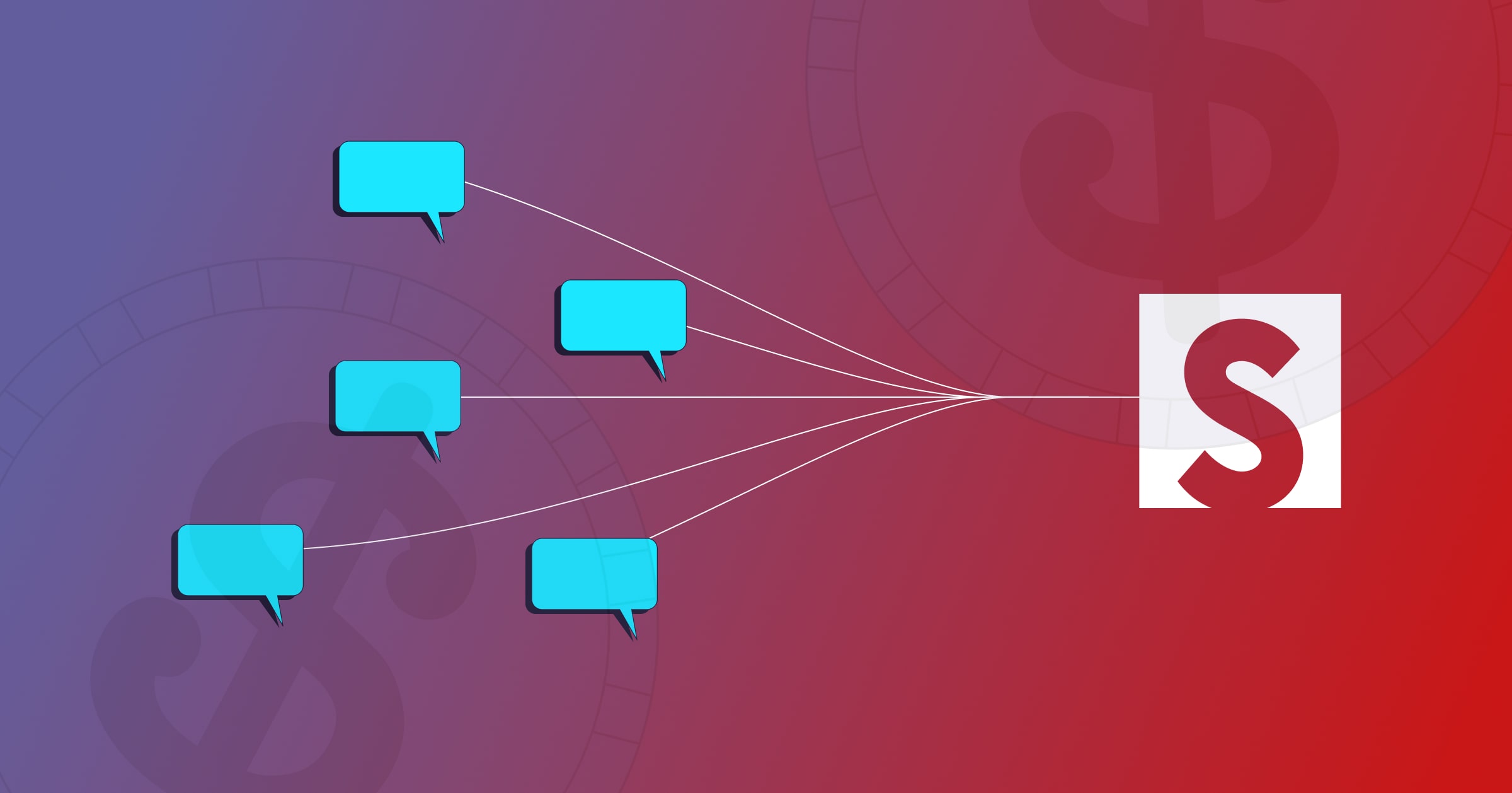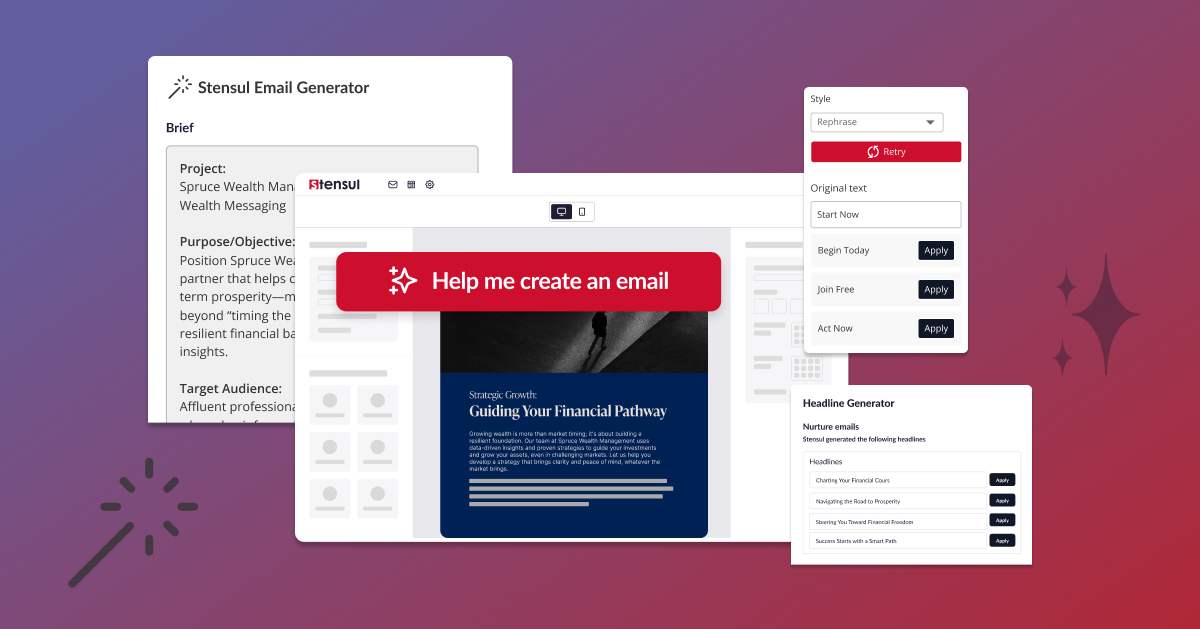Be honest. Requests for email are rising steadily. It’s as if everyone wants an email created for one business purpose or another—and with good reason. They’ve come to know what email marketing pros, like you, have known for quite some time: Email works.
Some 90% of B2B marketers point to email as their top lead generator and 80% of B2C marketers say email is their best way to retain customers. Others, like event planners who work in the field, find it’s a great way to build attendance for in-person product demos or online webinars. Salespeople, whether they’re working on the other side of the world or across town, feel it’s an excellent way to prospect for new customers. Those involved in people operations see email as a superb vehicle to have employees understand and embrace new policies. And the list of who wants to use the power of email goes on.
Chances are this demand manifests itself in your marketing organization as an increasingly higher volume of requests for emails to be created with increasingly shorter due dates. Your email team might be already stressed by the workload. Meaning delays occur, a result of bottlenecks that can and do occur in the way the vast majority of companies create email. That is a complicated process involving specialists using single-purpose tools operating in silos, taking days or weeks to create a single email.
The folks in your company operating in the field often need their emails far sooner than you’re able to create them. Realizing that, they take the process into their own hands. Often, the results are less than desirable. Beyond things like poorly worded messages, even typos, these field-created emails may have no visual connection to what your email team creates. The type font, colors, and even the logo may not comply with your corporate branding guidelines. Plus, if emails need to adhere to industry or regulatory language requirements and they don’t, your company might have a problem that’s greater than just poor color selection.
Empower those in the field
The way to manage this situation easily and effectively is to empower those in the field to create their own emails—with controls in place—and not have them ask you to create them. In other words, decentralize the creation while managing it on a centralized basis. If you wonder why you should consider this approach, consider these three compelling reasons to enable the field to create emails:
- Save time for your team
- Make the field more agile
- Yield better results
Save time for your team
The fundamental reason to decentralize email creation is to shift work your team is handling to others, freeing up time for things like complex coding, personalization or segmentation, and optimizing your marketing automation p platform (MAP). You can let them handle their own email requests.
Reassignment of email creation does not mean relinquishing control over how emails are made or what they will look like when completed. Using an email creation platform lets you institute robust guardrails to keep all aspects safe and secure, ensuring branding and regulatory compliance each and every time no matter who creates the email.
Make the field more agile
Field marketing activities often crop up unexpectedly. With a week or more of time typically eaten up by the requested email creation, your colleagues in the field won’t have time to focus on strategy or adjust to changes in dates or venues and could end up with emails that miss the mark. Also, the inherent back-and-forth that goes on in most centralized email creation processes prevents a quick reaction. With an email creation platform, the field can make changes quickly and easily.
Yield better results
Your team is full of email experts. They might not be experts on the sales climate for your company’s product in any of the markets in which it’s sold, however. Those working in the local markets know what sort of message will resonate with prospects and customers there. By enabling those closest to the customer to create the email, chances are good it will achieve, if not exceed, the desired result. Here, too, an email creation platform allows for email creators to use the right language in the right way.
Controls aid email creation in the field
In terms of controls, the management of decentralized email creation from a central point involves six areas:
- Templates and modules
- Content and images
- Permissions and approval
- Deployment
- Measurement
- Support
Templates and modules
Make it clear with what and how the field can create emails. Will they use modules or work in templates? If one, the other, or both, someone on your team needs to determine what you need to lock down.
Identify who on your team will maintain these modules and templates both from a technical, “clean code” basis and a branding/regulatory compliance. Once you have determined everything, communicate to the field so there are no misunderstandings later.
Content and images
An email creation platform lets you preconfigure practically every detail of your corporate branding guidelines as well as your company’s and industry’s required legal statements. Every word of text will be as it needs to be. Robust guardrails ensure email creation in the field is worry-free for you and your team.
Guardrails also extend to the type, size, and nature of images. The visual aspect of emails today has greater importance due to the impact of dark mode as well as the need to be ADA-compliant. Assuming your organization has an image library or some kind of digital asset management (DAM), who has access to what? Be sure everything is spelled out and understood by the field.
Permissions and approvals
The field should not create certain emails. Announcements that have company-wide implications need to be created centrally, for example. But even at the field level, there needs to be a well-defined governance process, a permission hierarchy that serves to protect the company, its employees, and even its customers.
Along with having everyone understand who has permission to do what, there’s the need to have a clear reviews and approvals process. It shouldn’t involve endless back-and-forth. If approvals don’t move as efficiently as the other components of the process, email creation in the field won’t work.
An email creation platform brings all involved together in the same environment, allowing reviews to move along, so you consistently meet deadlines.
Deployment
After the email has been approved, how does it get sent out? If that’s not understood by the field as well as your team, you have a problem. With an email creation platform you can have people in the field upload their emails to whichever deployment platform your organization uses easily with one click through a secure API. Even with that process, you may still want to have them push it to the deployment platform for your team to give it one last look before it is actually deployed.
Measurement
Beyond measuring email performance, you need to assess how the decentralized approach to email creation is working. Ask probing questions to show you’re not going through the motions and that you want field email creation to work as much as those in the field.
Support
Even with an email creation platform, people in the field will seek advice, have questions, and even run into problems when creating emails. Who do they contact? And for which kind of issue? Make sure a designated person or your team is always ready, willing, and able to help.
Make email creation in the field happen, collaboratively
If you want email creation in the field to be done right, then you need to bring the key players out in the field into this process, from the very start—whether for a new implementation or a major revision to what you may have in place.
Once you’ve devised your rollout plan, determine which group to start with. The best group includes the ones who will embrace decentralized email creation and, in the process, become your champions, encouraging others to join in this process.
Follow these suggestions and you’ll be able to manage email creation in the field worry-free. For more information, download the Stensul eBook, Worry-free email creation in the field – 3 steps to get and keep control of decentralized email creation.


